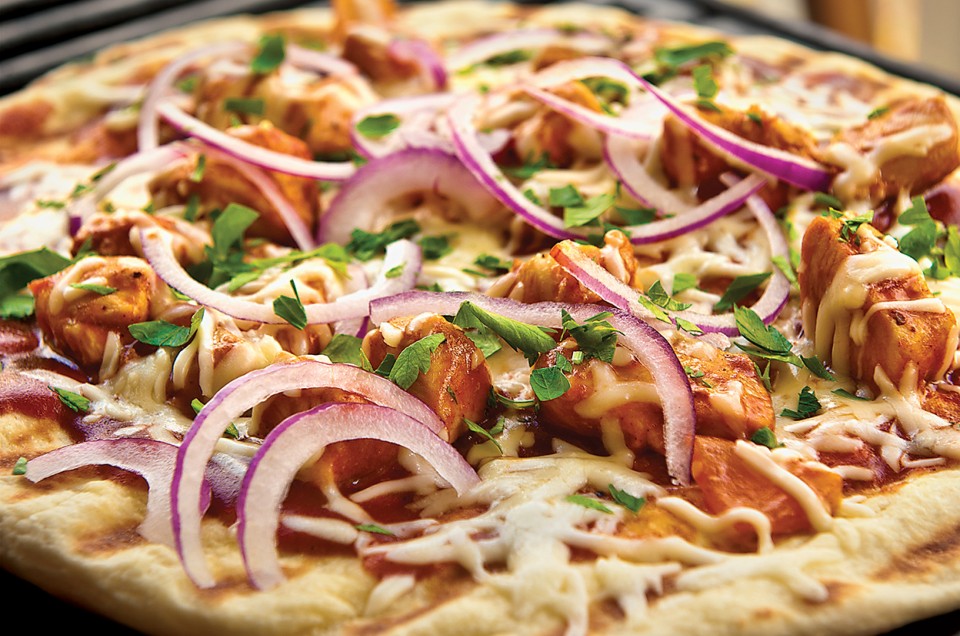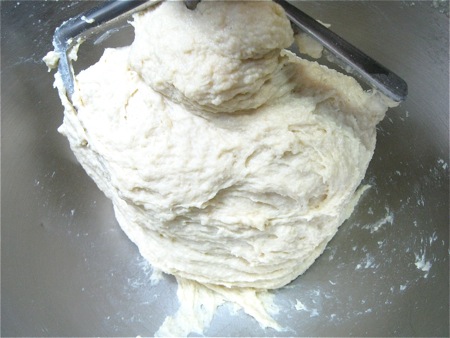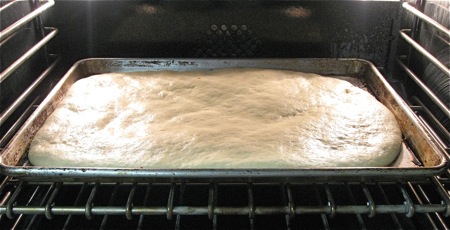


Hey, look in the fridge: see that barbecued chicken in there?
Back there with the potato salad and onion dip and coleslaw from your 4th of July bash?
Man does not live by cold leftovers alone. Let's make something tasty out of those grilled boneless thighs.
Something like Barbecued Chicken Pizza.
Remember the days when pizza meant cheese and tomato sauce – period?
OK, maybe you're not THAT old. But trust me, it's only within the past 50 years or so that pizza in America has taken its place up there with Big Macs and ham sandwiches as an everyday meal choice.
Before World War II, pizza was confined to Italian communities in cities like New York, San Francisco, and Chicago. But American GIs, having discovered this tasty treat while serving in Italy, came home clamoring for it.
Thus, their market established, the first pizza chains were born: Chicago's Pizzeria Uno in 1943; Shakey's Pizza, 1954, in Sacramento, California; and Pizza Hut, pride of Wichita, Kansas, which first opened its doors in 1958.
Between the burgeoning chains, and mom and pop shops popping up all over, competition bred innovation: tomato sauce and cheese quickly morphed into pepperoni, and mushrooms, and peppers... and ham-and-pineapple Hawaiian.
To say nothing of slow-roasted pulled pork, red onions, cilantro pesto, mozzarella and queso quesadilla cheese with spicy habanero salsa (thank you, California Pizza Kitchen).
Speaking of California Pizza Kitchen, that chain claims to have invented the first version of barbecued chicken pizza, described in their menu as "The Original BBQ Pizza, invented here in 1985. BBQ sauce, smoked Gouda, mozzarella, BBQ chicken, red onions, and cilantro."
Our iteration skips the cilantro and Gouda, but otherwise remains true to the original: chicken, barbecue sauce, mozzarella, and red onions.
Which brings us back to where we started: that leftover chicken in your fridge. You'll need about 1 1/2 pounds of boneless barbecued chicken for the following pizza.
Don't have a scale? Get out a big cookie sheet or half-sheet pan (about 18" x 13", double the size of your 9" x 13" pan). Now lay the cooked chicken on top of it, as though you were topping a pizza. That's how much you need.
If you don't have any leftover barbecue (like, you're reading this post in November, maybe), here's what to do.
Buy 1 1/2 to 2 pounds of boneless, skinless chicken breasts or thighs. Cut the pieces into 1" to 2" chunks.

Heat 1 tablespoon olive oil in a skillet over medium high heat. Add the chicken and sauté until the edges begin to brown, about 10 minutes.

Add 2 cloves garlic, peeled and chopped; and 1 or 2 medium red onions, peeled and cut into chunks, as pictured.
For added texture/crunch in the topping, sauté 1 onion with the chicken; and reserve the other, using it to top the pizza just before baking.

Sauté, stirring frequently, until the onions begin to soften, about 5 minutes over high heat.

Add 1/2 cup of barbecue sauce and toss to coat, continuing to cook until the sauce has thickened.

If you use a thick sauce to begin with, this will happen immediately; if the sauce is thinner, it could take 3 or 4 minutes.
Set aside to cool; refrigerate until you're ready to top your pizza.
Next, the dough. This versatile dough (our Now or Later Pizza Crust) can be used immediately; but I prefer to refrigerate it overnight. The long, cool rest really develops the crust's flavor.

Place the following in a bowl:
1 3/4 cups (206g) King Arthur Unbleached All-Purpose Flour
1 1/4 cups (206g) semolina*
1 tablespoon + 1 teaspoon (8g) Pizza Dough Flavor (optional, but delicious)
1 teaspoon instant yeast
1 1/4 teaspoons (8g) salt
2 tablespoons (25g) olive oil
1 cup + 2 tablespoons to 1 1/4 cups (255 to 283g) lukewarm water
*Use 3 cups all-purpose flour OR 3 cups Perfect Pizza Blend in place of the all-purpose/semolina mixture, if desired.

Mix the ingredients until they come together.

The dough will be soft and cohesive, but not at all smooth.

Beat at high speed of your electric mixer, continuing to use the beater blade, for 2 minutes. See how the dough is beginning to smooth out? Time to switch to the dough hook.

Knead for 7 minutes.

The dough should be smooth, quite soft, and very stretchy. That's the gluten doing its job.

See how the dough is just barely sticking to the bowl, right around the edges? LOVE this texture. It's the best of both worlds: stiff enough to work with, sticky enough to rise nicely.
You can also make the dough in a bread machine set on the dough cycle.
Finally, if kneading by hand, mix the ingredients, then let the dough rest, covered, for about 30 minutes; this will give the flour a chance to absorb the water, which will make kneading easier.

Leave the dough right in the bowl, if you don't need the bowl; or leave it in the bread machine, to complete its dough cycle.
I usually transfer ready-to-rise dough to an 8-cup measure, so I can track its progress.
Allow the dough to rise, covered, for 45 minutes; then refrigerate it for 4 hours (or up to 36 hours); this step will develop the crust’s flavor. It'll continue to rise in the fridge, so make sure it's in a big enough container. If you're using your bread machine, transfer it to a larger container before refrigerating.

Here we are, about 14 hours later.

This is what they mean when they say "a web of gluten strands." You're actually seeing a web of dough, but each of those dough strands is made up of gluten strands... pretty interesting, eh?

Place the dough in a lightly greased pan - the aforementioned half-sheet pan is a good choice, size-wise.
I like to drizzle olive oil in the bottom of the pan, as well as greasing it with non-stick vegetable oil spray. I like the crispness lent by the oil, as well as that hint of deep-fried flavor. Think Pizza Hut.

Place the dough in the pan, gently stretching it to fit. If the dough fights back, cover it and walk away for 10 minutes; this will give the gluten a chance to relax. When you return, the dough should be easier to work with.

Cover the dough, and let it rise for 30 to 90 minutes, depending on how thick you want your crust.
Towards the end of the rising time, preheat the oven to 425°F.

Bake the untopped crust for 12 minutes. Remove it from the oven. You can either cool the crust and store for a couple of days, tightly wrapped, at room temperature; or continue with the pizza.

When you're ready for pizza, spread the partially baked crust with about 1 cup barbecue sauce; more or less, to taste.

Sprinkle 2 cups (8 ounces) shredded mozzarella cheese atop the sauce.

Top with the cooked chicken mixture, warming briefly in the microwave first if it's been refrigerated.
For a pleasantly crisp touch, here's where you use the other red onion. Peel, cut into chunks, and scatter top the chicken mixture.

Bake the pizza for about 12 minutes...

...until the crust is browned and the topping is bubbling.

Remove from the oven, and immediately transfer the pizza to a rack, so its bottom doesn't become soggy. Serve hot or warm.
Remember that web of gluten strands? You can still see it here, can't you?
Am I a total bread nerd?
Yes.
And that includes pizza.
Read, bake, and review (please) our recipe for Barbecued Chicken Pizza.